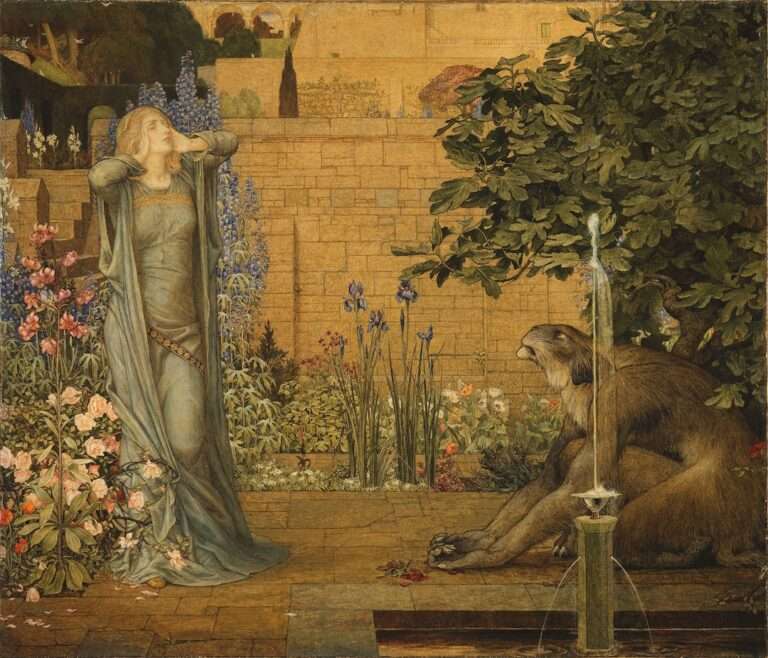Exploring Symbolism in Religions

Color plays a significant role in religious symbolism across various cultures and religions. It is a powerful tool used to convey meaning, evoke emotions, and enhance the spiritual experience. Different colors hold different significance and are associated with various aspects of religious beliefs and practices. From the vibrant reds to the serene whites, each color carries its own unique symbolism that adds depth and richness to religious traditions.
In religious symbolism, color is often used as a visual language to communicate abstract concepts and spiritual ideas. It helps to create a visual representation of the divine and allows individuals to connect with the sacred on a deeper level. Color can evoke emotions, such as joy, sorrow, peace, or passion, and can enhance the overall religious experience.
The Color Red: Significance in Christianity, Hinduism, and Buddhism
The color red holds great significance in Christianity, Hinduism, and Buddhism. In Christianity, red is often associated with blood and sacrifice. It represents the blood of Christ shed for the redemption of humanity. Red is also used during important religious ceremonies such as Pentecost, symbolizing the descent of the Holy Spirit upon the apostles.
In Hinduism, red is a prominent color used during the festival of Holi. It represents love, passion, and fertility. During Holi, people throw red-colored powders and water at each other as a way to celebrate love and unity.
In Buddhism, red represents passion and energy. It is often associated with the fire element and is used to symbolize transformation and enlightenment. Red is also used in Buddhist art to depict deities and spiritual figures.
The Color Blue: Symbolism in Judaism, Islam, and Hinduism
Blue holds significant symbolism in Judaism, Islam, and Hinduism. In Judaism, blue represents divinity and holiness. It is associated with the divine presence and is often used in religious rituals and ceremonies. The color blue is also found in the tallit, a prayer shawl worn by Jewish men during prayer.
In Islam, blue represents the divine and the heavens. It is often associated with the Prophet Muhammad and is used to symbolize spirituality and purity. Blue tiles and mosaics can be found in many Islamic mosques, representing the celestial realm.
In Hinduism, blue is associated with the god Vishnu, who is often depicted with blue skin. Blue also represents the infinite and the divine. It is believed to have a calming effect on the mind and is used in Hindu temples to create a serene and peaceful atmosphere.
The Color Green: Meaning in Islam, Christianity, and Native American Religions
Green holds significant meaning in Islam, Christianity, and Native American religions. In Islam, green represents paradise and fertility. It is associated with the Prophet Muhammad and is considered a sacred color. Green is often used in Islamic art and architecture to symbolize growth, renewal, and abundance.
In Christianity, green represents growth and renewal. It is often associated with the season of Lent and is used to symbolize hope and new life. Green is also used during the Christmas season to represent everlasting life.
In Native American religions, green represents nature and healing. It is associated with the earth and is used in ceremonies and rituals to connect with the natural world. Green is seen as a color of balance and harmony.
The Color White: Significance in Hinduism, Christianity, and Buddhism
White holds significant symbolism in Hinduism, Christianity, and Buddhism. In Hinduism, white represents purity and peace. It is often associated with gods and goddesses, such as Saraswati (the goddess of knowledge) and Shiva (the god of destruction and transformation). White is also worn by individuals during religious ceremonies as a symbol of purity.
In Christianity, white represents innocence and holiness. It is often used during baptism and other religious ceremonies to symbolize the cleansing of sins and the new life in Christ. White is also associated with angels and is used to depict heavenly beings.
In Buddhism, white represents enlightenment and transcendence. It is often associated with the Buddha and is used to symbolize purity of mind and spirit. White is also used in Buddhist art and architecture to create a sense of serenity and peace.
The Color Black: Symbolism in Christianity, Islam, and African Religions

Black holds significant symbolism in Christianity, Islam, and African religions. In Christianity, black represents death and mourning. It is often used during funerals and other somber occasions to symbolize grief and loss. Black is also associated with darkness and sin.
In Islam, black represents submission and humility. It is often worn by individuals during the Hajj pilgrimage to Mecca as a symbol of devotion and surrender to God. Black is also associated with the Kaaba, the holiest site in Islam.
In African religions, black represents the unknown and the mysterious. It is often associated with the spirit world and is used in rituals and ceremonies to connect with ancestral spirits. Black is seen as a color of power and protection.
The Color Yellow: Meaning in Buddhism, Hinduism, and Chinese Religions
Yellow holds significant meaning in Buddhism, Hinduism, and Chinese religions. In Buddhism, yellow represents the middle path and detachment. It is often associated with monks and is used to symbolize renunciation of worldly desires. Yellow is also used in Buddhist art to depict enlightenment.
In Hinduism, yellow represents knowledge and learning. It is associated with the god Vishnu and is used during religious ceremonies to invoke wisdom and understanding. Yellow flowers are often offered to deities as a symbol of devotion.
In Chinese religions, yellow represents royalty and power. It is often associated with the emperor and is used to symbolize authority and prosperity. Yellow is also considered a lucky color and is used in traditional Chinese ceremonies and celebrations.
The Color Purple: Significance in Christianity, Judaism, and Hinduism
Purple holds significant symbolism in Christianity, Judaism, and Hinduism. In Christianity, purple represents royalty and power. It is often used during the season of Advent and is associated with the coming of Christ as the King of Kings. Purple is also used during Lent to symbolize penance and preparation for Easter.
In Judaism, purple represents wealth and luxury. It is often associated with royalty and is used to symbolize abundance and prosperity. Purple is also used during religious ceremonies and celebrations.
In Hinduism, purple represents the god Shiva and spiritual attainment. It is associated with meditation and deep contemplation. Purple flowers are often offered to Shiva as a symbol of devotion.
The Color Gold: Symbolism in Christianity, Buddhism, and Hinduism
Gold holds significant symbolism in Christianity, Buddhism, and Hinduism. In Christianity, gold represents divinity and perfection. It is often associated with the glory of God and is used to symbolize the heavenly realm. Gold is also used in religious art and architecture to create a sense of awe and majesty.
In Buddhism, gold represents enlightenment and wisdom. It is often associated with the Buddha and is used to symbolize the highest state of spiritual attainment. Gold is also used in Buddhist temples to depict sacred objects and deities.
In Hinduism, gold represents wealth and prosperity. It is associated with the goddess Lakshmi, who is believed to bring good fortune and abundance. Gold jewelry and ornaments are often worn during religious ceremonies as a symbol of prosperity.
The Universal Language of Color in Religious Symbolism
Color plays a vital role in religious symbolism across various cultures and religions. From the vibrant reds to the serene whites, each color carries its own unique symbolism that adds depth and richness to religious traditions. Color is used to convey meaning, evoke emotions, and enhance the spiritual experience. It is a universal language that transcends cultural and linguistic barriers, allowing individuals to connect with the sacred on a deeper level. Whether it is the red of sacrifice, the blue of divinity, the green of renewal, or the gold of perfection, color serves as a powerful tool in religious symbolism, enriching the spiritual journey of believers around the world.
If you’re interested in exploring the fascinating world of color symbolism in religions, you might also enjoy reading about the symbolism of the star. The star has been a powerful symbol throughout history, representing various concepts such as guidance, divinity, and enlightenment. To delve deeper into this topic, check out this insightful article on Symbolism Hub: Symbolism of the Star.
FAQs
What is color symbolism in religions?
Color symbolism in religions refers to the use of colors to represent different concepts, beliefs, and emotions in religious practices and traditions.
Which religions use color symbolism?
Many religions use color symbolism, including Christianity, Hinduism, Buddhism, Islam, Judaism, and Taoism.
What are some common colors and their meanings in religion?
Some common colors and their meanings in religion include white (purity, innocence), black (death, mourning), red (passion, sacrifice), blue (heaven, spirituality), green (life, growth), and yellow (wisdom, enlightenment).
Why is color symbolism important in religion?
Color symbolism is important in religion because it helps to convey important concepts and beliefs in a visual and symbolic way. It can also help to create a sense of unity and identity among followers of a particular religion.
How is color symbolism used in religious art?
Color symbolism is often used in religious art to convey important themes and messages. For example, a painting of the Virgin Mary might feature a blue robe to represent her spiritual purity and connection to heaven.
Are there any differences in color symbolism between different branches of the same religion?
Yes, there can be differences in color symbolism between different branches of the same religion. For example, in Christianity, the color purple is associated with royalty and penitence in Catholicism, but is not used in the same way in Protestantism.
Can color symbolism change over time?
Yes, color symbolism can change over time as religious practices and beliefs evolve. For example, the color red was once associated with evil in Christianity, but is now often used to represent the blood of Christ and his sacrifice.





